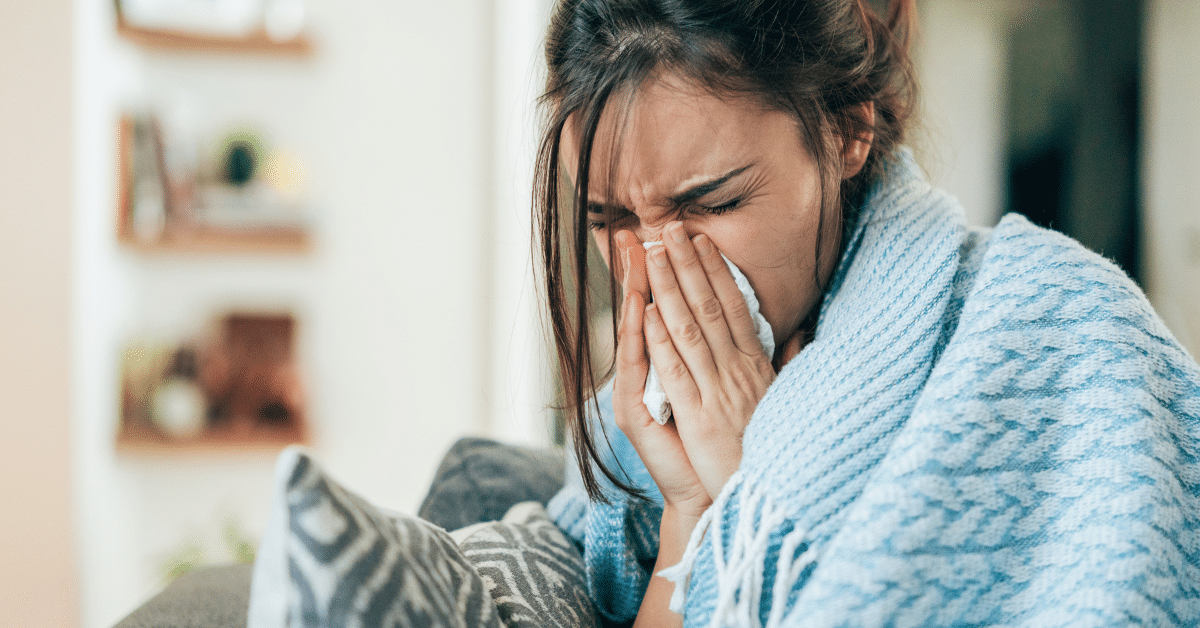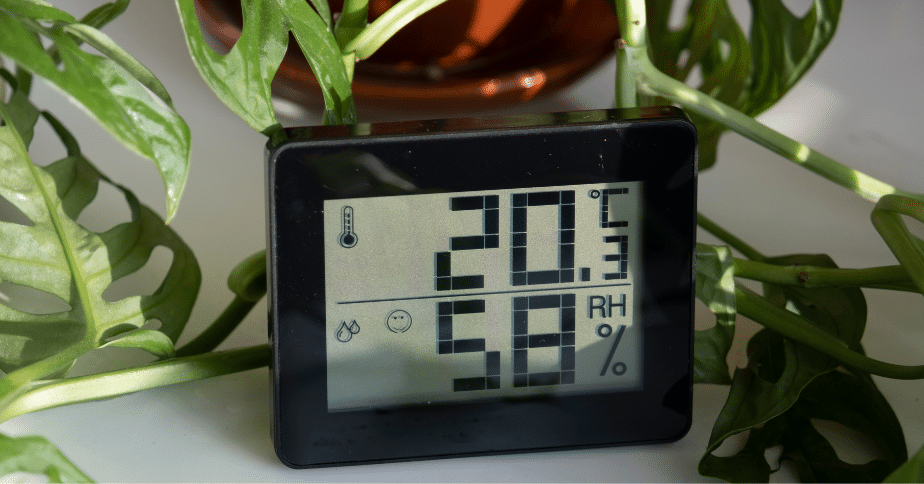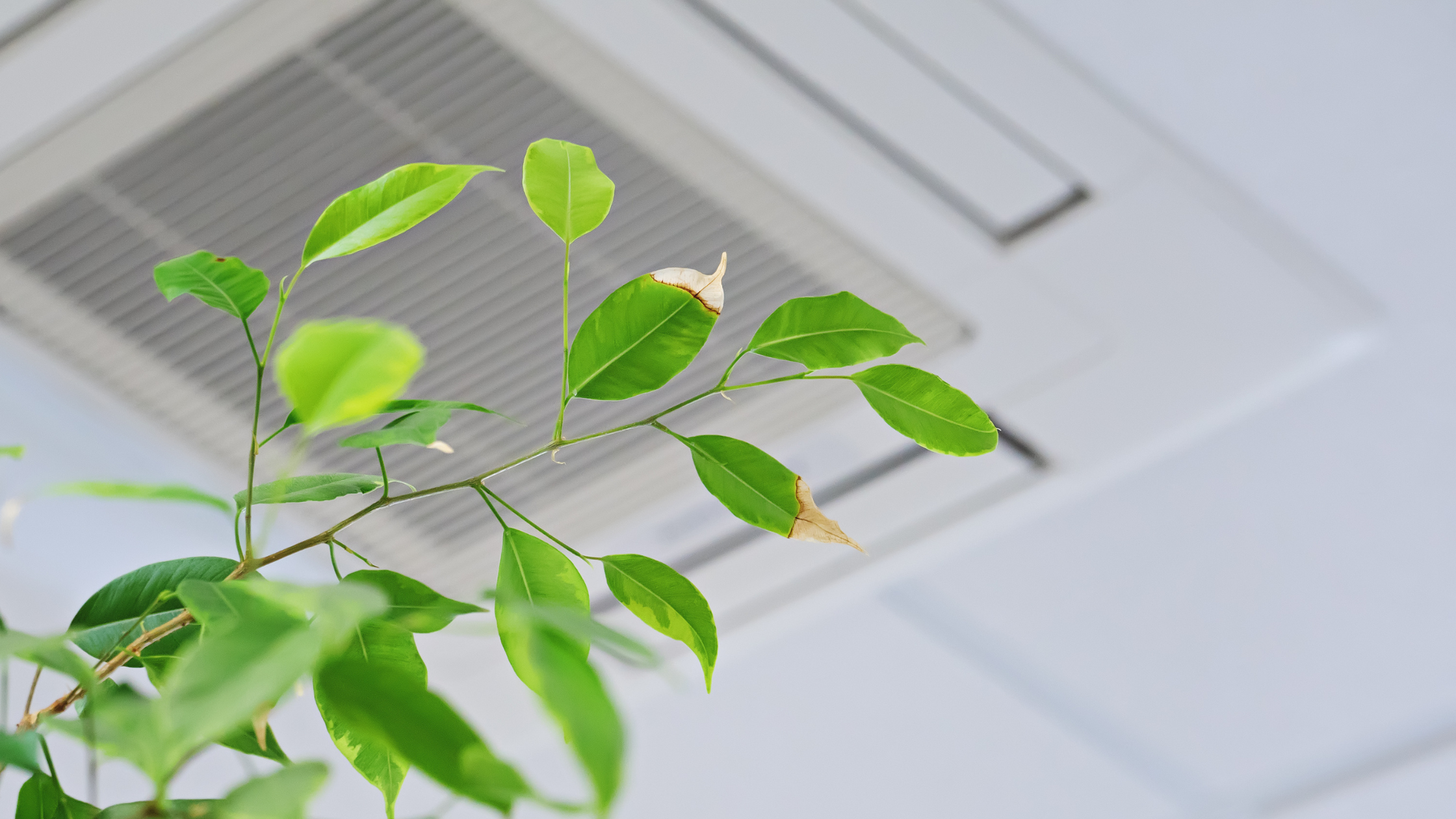How Poor Air Quality Leads to Higher Flu Rates

Air quality and health can go hand-in-hand. Poor air quality can have a variety of harmful consequences on our respiratory and cardiovascular systems, especially in susceptible groups including the elderly, small children, and individuals with preexisting health disorders. An estimated 3.2 million fatalities, including approximately 237,000 deaths of children under the age of 5, were attributable to household air pollution in 2020.
Nowadays, protecting ourselves and our loved ones from the negative consequences of poor air quality is more crucial than ever because of the rise in pollution and urbanization. Exposure to air pollution makes individuals more vulnerable to respiratory infections like the flu. In fact, seasonal flu is a major threat in the United States which causes nearly 225,000 hospitalizations and almost 20,000 fatalities annually.
Air Quality and Health of the Respiratory System
There is a substantial link between air quality and respiratory health. While high air quality can help to maintain respiratory health, poor air quality can have a detrimental effect on it. When it comes to respiratory health, the quality of the air you breathe is just as important as the quantity. Breathing difficulties including bronchitis, asthma, and lung cancer are more common in areas with high pollution.
Ground-level ozone is a significant contributor to unhealthy air conditions. Pollutants from vehicles and industry combine with sunlight to produce this gas. The elderly and young are particularly vulnerable to the respiratory irritation caused by ozone. Particulate matter, or PM, is another problematic contaminant. Small particles of soot, dust, and other substances can be inhaled and lead to health issues such as chronic coughing, wheezing, and shortness of breath.
Polluted air contains compounds that are hazardous to the respiratory system, including particulate matter, ozone, nitrogen dioxide, and sulfur dioxide. These chemicals can irritate the respiratory tract and damage the immune system, making people more susceptible to the flu. Exposure to air pollution has been linked to a range of respiratory problems, including coughing, wheezing, shortness of breath, and asthma. It can also exacerbate existing respiratory conditions, such as asthma and chronic obstructive pulmonary disease (COPD).
People who already have sound respiratory systems are less likely to experience the severe consequences of the flu and will recover more quickly. While people who already have respiratory issues are more susceptible to serious flu complications like pneumonia and may take longer to recover.
Having compromised respiratory health increases vulnerability to the flu in several ways such as:
- When it comes to fighting off respiratory illnesses like the flu, your body’s first line of defense is the respiratory system. A healthy respiratory system is like a shield that protects and can fight and remove viruses and other pathogens from the air we breathe. Subsequently, when the respiratory system is weakened, it may not have that zeal and zest to protect the body from infections.
- The inability to fend off infections is exacerbated by compromised respiratory health. People with weakened immune systems are more susceptible to pneumonia and other severe flu consequences.
- The severity of a flu infection might be worsened by preexisting respiratory conditions. Asthma sufferers, for instance, may have more severe flu symptoms and a longer recovery period.
Impact of Air Pollution on the Spread of Flu
Pollution can spread the flu. Air pollution causes the body to secrete inflammatory chemicals, making the respiratory tract more vulnerable to illness. This can help the flu virus infiltrate the body. People who are exposed to high levels of air pollution may be more likely to get respiratory diseases like the flu. When the respiratory system is compromised, the ability to filter out viruses and other hazardous chemicals from the air we breathe becomes feeble.
The respiratory tract becomes more vulnerable to infection as a result of air pollution-induced inflammation. This can make it easier for the flu virus to enter the body and establish an infection. Moreover, air pollution can impair the immune system, making it harder for the body to combat illnesses. This makes people with a weakened immune system more susceptible to developing serious complications from the flu, such as pneumonia.
Each year, seasonal influenza viruses produce epidemics worldwide. Numerous studies have suggested a connection between air pollution and respiratory illnesses. Oxidative stress, caused by air pollution, leads to the formation of free radicals that can harm the respiratory system and make it more susceptible to viral and bacterial infections.
It is really worrying that respiratory viruses can play a role in causing life-threatening respiratory illnesses. In the past, human coronaviruses were largely classified as benign respiratory infections. However, the current SARS-CoV-2 pandemic and other recent outbreaks of severe acute respiratory syndrome (SARS) and Middle East respiratory syndrome (MERS) has thrust coronaviruses into the global spotlight as extremely dangerous respiratory pathogens.
But how exactly can pollution cause more cases of the flu? Well, it turns out that your respiratory system is your first line of defense against the flu virus. Air pollution compromises lung health, making it more susceptible to viral infection. People with preexisting respiratory conditions are also more likely to require hospitalization following a flu infection.
It is important to remember that getting vaccinated against influenza isn’t just about you; it’s about keeping people around you from getting sick as well. Reduce the spread of the flu by taking a few easy measures to improve air quality in your community during this flu season.
Strategies for Improving Air Quality and Decreasing Flu Outbreaks
There is a strong correlation between respiratory diseases like the flu and poor air quality. Poor air quality can result from a variety of sources, including industrial emissions, vehicle exhaust, and energy production. When we breathe in polluted air, it can damage our respiratory system and increase our risk of developing respiratory diseases like the flu. Therefore, it is crucial to take steps to improve the air around us to protect our health and reduce the prevalence of respiratory illnesses.
There are several measures that individuals, communities, governments, and organizations can take to improve air quality and decrease flu outbreaks. Here are some strategies that can be implemented at various levels:
Individuals:
- Use air purifiers to eliminate air pollutants in your home or office. Look for models that are effective at removing a range of contaminants, including particulate matter, volatile organic compounds, and bacteria.
- Plant trees and other vegetation in your local neighborhood. Trees and plants can absorb pollutants and enhance air quality by releasing oxygen and removing carbon dioxide from the air.
- Clean with non-toxic products instead of those that contain harmful chemicals. Many cleaning products release volatile organic compounds (VOCs) into the air, which can contribute to poor air quality.
- Reduce your consumption of fossil fuels by driving less and using energy-efficient modes of transportation, such as public transportation, biking, or walking. If you do need to drive, consider switching to an electric or hybrid vehicle, which produces fewer emissions.
- Keep your heating and cooling systems in good working order by maintaining them regularly and replacing filters as needed. Proper maintenance can help your systems operate more efficiently and reduce the amount of air pollution they produce.
Communities:
- Encourage the use of public transportation, biking, or walking as alternatives to driving. Public transportation can help reduce the number of vehicles on the road and the resulting emissions.
- Work with local businesses to implement green initiatives, such as reducing waste and using environmentally friendly products. This can help improve air quality in your community and set a good example for others to follow.
- Support the development of green spaces, such as gardens and parks, in your community. These spaces can provide a place for people to relax and enjoy the outdoors, and they also help absorb pollutants and improve air quality.
Governments and Organizations:
- Implement stricter regulations on industrial and vehicular emissions. This can help reduce the amount of pollution that is released into the air and improve the overall air quality in your region.
- Increase support for renewable energy sources, such as solar and wind power. Renewable energy sources produce fewer emissions than fossil fuels and can help reduce air pollution.
- Integrate renewable energy sources with public transportation systems. This can help reduce emissions from transportation, which is a major contributor to air pollution.
- Establish parks and other green areas in cities. These spaces can provide a place for people to relax and enjoy the outdoors, and they also help absorb pollutants and improve air quality in urban areas.
- Provide financial incentives to people and corporations to encourage them to reduce their environmental impact. For example, you could offer tax breaks or grants to businesses that implement green initiatives or to individuals who switch to energy-efficient appliances or vehicles.
Many strategies can be implemented at various levels to improve air quality and reduce flu outbreaks. By taking action and working together, we can create a healthier and more sustainable environment for ourselves and future generations.
Final Thoughts- Air Quality and Health Effects
The air you breathe has a direct impact on your physical and mental well-being. Reduced air quality has been linked to an increase in respiratory illnesses including the flu. Because the flu virus is airborne, the transmission of the disease is facilitated by conditions of low air quality. As an added downside, poor air quality might make it more difficult for people with respiratory issues to avoid getting the flu.
Poor air quality can have devastating effects on people’s health both individually and in communities. As well as contributing to an increase in the number of flu infections, low air quality has also been linked to more severe flu symptoms and even fatalities. Making sure our houses are well-ventilated, wearing masks when we go outside into polluted areas, and not smoking indoors are all things we can do to protect ourselves. Taking these easy precautions will help us and our community stay healthy during the flu season.
You may be wondering what steps you may take to safeguard your loved ones and yourself. Follow air quality updates and take preventative measures to minimize your exposure to pollution. When outside air quality is low, it is better to stay indoors and avoid any intense activities. Close all doors and windows, and if at all feasible, run an air purifier. Your chances of catching the flu this year might be lowered by following these measures.
How Can Air Quality Assessors Help?
Mold, dust, and other pollutants lower your indoor air quality and weaken your immune system. If you notice that you have a problem with mold or mildew in your home, it is best to enlist the help of a professional. Contact AQA if you have any questions or concerns about mold in your home or business. With their combination of experience and knowledge, you can be assured that everything will be handled properly.



